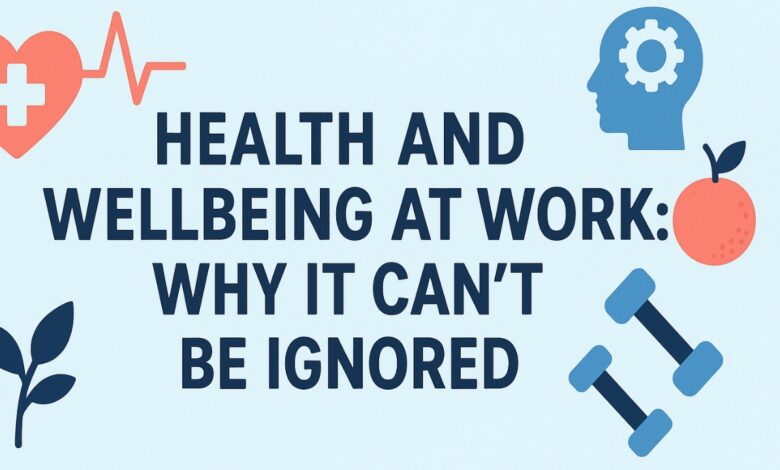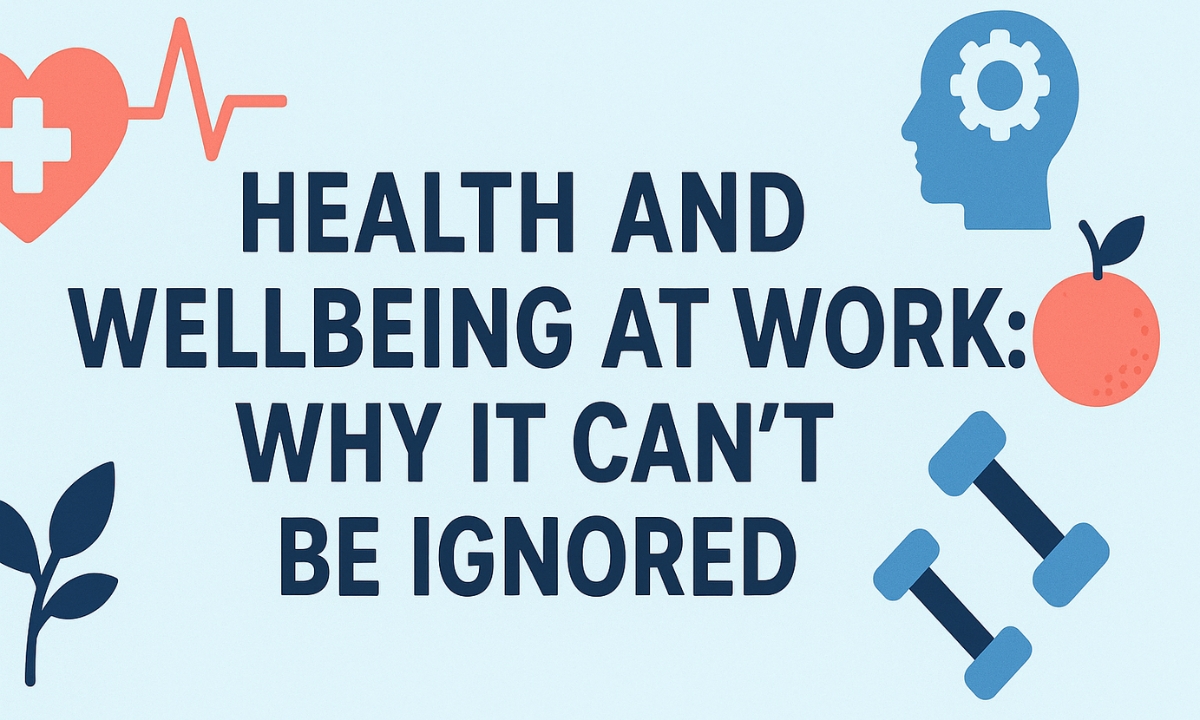Health and Wellbeing at Work: Why It Can’t Be Ignored

Health and well-being at work are more than just office buzzwords. They affect how people feel, work, and perform every day. If your body or mind is not in a good place, it shows in your work. That’s why both workers and managers should care about creating a healthy workplace.
Health and Wellbeing at Work Matter More Than Ever
When people feel good at work, they do better. This includes both mental and physical health. Companies that support their teams usually see better results. That means higher productivity and lower sick days.
Ignoring health issues leads to burnout and poor teamwork. This also costs businesses money. So, investing in wellbeing isn’t a luxury. It’s a smart choice for any company that wants to grow.
What Is Workplace Wellbeing?
Workplace wellbeing covers how safe, supported, and healthy people feel while working. This includes mental wellness, physical comfort, and work-life balance. A calm, clean, and flexible work setup can improve all these things.
Good wellbeing at work doesn’t only come from gym memberships or yoga sessions. It starts with respect, fair treatment, and a supportive environment. People need to feel heard and valued every day.
Mental Health Support at Work
Mental health is just as important as physical health. Stress, anxiety, or depression can affect focus and performance. A healthy workplace talks openly about these problems. It doesn’t hide them.
Offering help like counseling or mental health days makes a big difference. Even small acts, like managers checking in with their teams, help people feel safe. Mental support should be part of the company culture, not just a side benefit.
Read More » Trade Me Jobs: What It Is and Why People Use It
Physical Health in the Workplace
 Physical health means more than just avoiding sickness. It includes things like posture, movement, and staying active. Sitting all day can harm the body over time. That’s why standing desks or walking breaks help.
Physical health means more than just avoiding sickness. It includes things like posture, movement, and staying active. Sitting all day can harm the body over time. That’s why standing desks or walking breaks help.
Companies can also promote health by offering healthy snacks or gym passes. Clean air, good lighting, and regular cleaning help prevent illness. These small steps lead to fewer sick days and more energy.
The Role of Managers in Wellbeing
Managers set the tone for workplace health. They notice early signs of stress or overload. When they act quickly, problems don’t get worse. Good leaders make people feel safe, not scared.
Supportive managers listen and give clear guidance. They help balance workloads and give fair feedback. Training leaders to manage stress in their teams is a wise move. A calm team starts with a calm manager.
Why Work-Life Balance Matters
People need time to rest. If they work too much, they break down. A healthy workplace respects people’s time. This means setting clear hours and avoiding calls outside work.
Work-life balance helps people enjoy both their jobs and their personal lives. It lowers stress and improves mood. That leads to better focus during work hours. Happy workers stay longer and give more.
How to Build a Healthy Work Culture
Healthy culture starts from the top. Leaders must care about health, not just talk about it. They need to show good habits and support others to do the same.
Open talk, respect, and fair treatment are key parts of a strong culture. Letting people share their views or problems makes them feel safe. When people trust their workplace, they give their best.
Benefits of Good Health and Wellbeing at Work
There are many clear benefits. Workers get sick less and stay in jobs longer. Teams work better and feel more loyal to the company.
Good wellbeing also helps attract top talent. People want to work where they are treated well. A healthy workplace boosts both morale and profits. Everyone wins.
Simple Ideas to Improve Health at Work
- Offer free mental health support
- Allow flexible hours or work-from-home options
- Encourage regular breaks
- Keep the office clean and safe
- Provide healthy food and drinks
- Offer standing desks or walking meetings
Even one small step can make people feel better. It shows that their health matters to the company.
Table: Signs of Poor vs. Good Wellbeing at Work
| Sign | Poor Wellbeing | Good Wellbeing |
|---|---|---|
| Mood | Low, stressed, anxious | Calm, focused, motivated |
| Sick Days | High absence | Low absence |
| Energy Levels | Tired, worn out | Active, alert |
| Teamwork | Poor communication | Open, helpful |
| Work Quality | Low focus, many errors | High focus, fewer errors |
| Staff Turnover | High | Low |
Frequently Asked Questions
1. What does health and wellbeing at work mean?
It means helping people stay mentally and physically healthy while working. It covers stress, safety, rest, and more.
2. How can employers support mental health?
They can offer counseling, give mental health days, train managers, and create a safe space to talk about problems.
3. Why is work-life balance important?
It helps people avoid burnout, stay happy, and work better. Rest is needed to stay healthy.
4. What are signs of poor wellbeing at work?
Low mood, tiredness, high absence, poor focus, and arguments are all signs.
5. Can wellbeing programs really help businesses?
Yes. They reduce sick days, improve work quality, and help teams stay longer.
Read more: Tool Tech Supply: Where Tools and Tech Come Together
Final Thoughts
Health and wellbeing at work should not be ignored. A happy worker is a better worker. When people feel good, they work better and stay longer.
Any workplace, big or small, can take steps to improve. Respect, balance, and support are the key. Good wellbeing leads to real growth — for both people and businesses.

